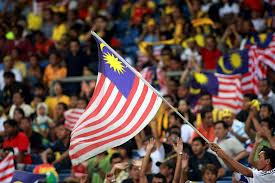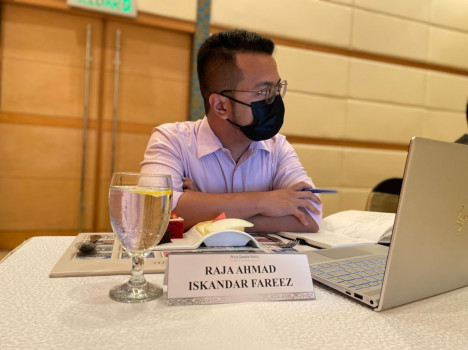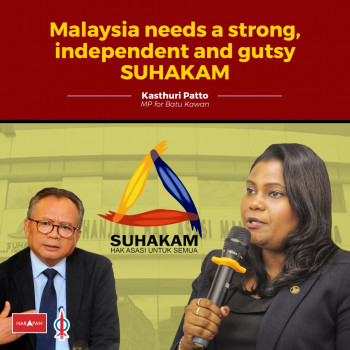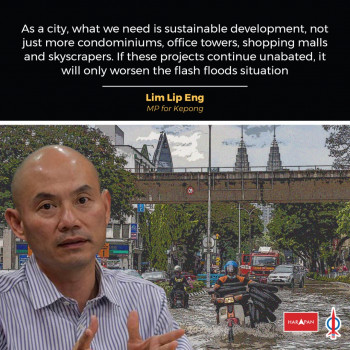by Liew Chin Tong, DAP Political Education Director and Kluang MP
In the wake of an earthquake, tectonic plates will shift and realign. It takes time before gradually stabilising. In the process of seismic shifting, instead of hoping for a more stable surface, it would be better to reflect on the possible changes after the earthquake.
The spectrum of Malaysian politics experienced three great political earthquakes that caused shifting and realignment. After each shaking, the scenario that emerged was a previously unthinkable one. Once the tectonic plates shift, the outcome is a change that will never be the same again.
The first pre-Merdeka pan-Malayan General Election in July 1955 saw the success of the Alliance, using the UMNO-MCA-MIC formula.
UMNO’s opponents in that election were Dato’ Onn’s Parti Negara, PAS and left-wing Parti Rakyat.
When Malay Left leader Dr Burhanuddin al-Helmy took over the helm of PAS in 1956, there was a certain degree of cooperation among anti-colonial activists, the Islamist movement, the Malay Left and state/ regional champions (particularly in Kelantan). As for Chinese politics, the Labour Party was the biggest threat to MCA.
This scenario went on until the 1964 General Election, after which three political earthquakes took place.
In the 1964 General Election, the People’s Action Party (PAP) – led by Lee Kuan Yew – contested several Peninsular Malaysia seats, but was unsuccessful to unseat the existing political groupings. The party only won one seat through Devan Nair.
1969 General Election
The Labour Party boycotted the election on 10 May 1969. Two parties rose up to fill the ensuing political vacuum, namely the newly-formed Democratic Action Party (DAP) and Gerakan – which went on to capture Penang state governance under Lim Chong Eu.
This election, and the May 13 incident which took place three days after it, was a political earthquake. The political spectrum realignment in the subsequent 1974 election can be summarised in two points:
Firstly, the demise of Left-leaning parties as a Parliamentary movement.
The eventual demise of the Left (then popular in the 1960s) could be attributed to:
- a) Parti Rakyat and Labour Party’s disagreement on language policy, causing the break up of the Socialist Front;
- b) In response to the international climate of Cold War and Vietnam war, the government cracked down on all left-leaning parties, including the moderate Left ones. Virtually all of the Labour Party’s Central Leadership was detained under ISA. As a response, even center-left forces were radicalised and polarised, eventually the Labour Party gave up its parliamentary struggle.
- c) Burhanuddin’s long ISA detention, health deterioration upon his release, and eventual demise in 1969. Circa 1965, the de facto leader of PAS was in fact Kelantan Menteri Besar Mohd Asri Haji Muda. Asri was also seen as the champion for Kelantanese regional identity, thus began PAS’ estrangement from left-wing and anti-colonial politics.
Secondly, UMNO’s dominance in the model of Race Politics
After the May 13 incident, the National Operations Council, chaired by Tun Abdul Razak, was formed on 16 May. The incumbent Prime Minister Tunku Abdul Rahman began to lose his grip on power and stepped down in September 1970.
Parliamentary democracy was suspended from between May 13 and when Parliament was reconvened in February 1971.
Tun Abdul Razak introduced the New Economic Policy, adopted the discourse of the Left on “equitable distribution” but practiced it in a race-based manner. Razak also courted PAS in the name of “Greater Malay Unity”.
Tun Abdul Razak altered the political spectru, when he turned the UMNO-MCA-MIC power-sharing model into an UMNO-dominant model. The role of the other Barisan Nasional component parties became a subservient one, this included former Opposition parties PAS, Gerakan, PAP, and others.
1982 PAS internal fight
With PAS being incorporated into a coalition government with the Alliance in 1973 and into the Barisan Nasional framework in 1974, there was no major Malay Opposition party. As racial politics reared its head, Parti Rakyat was sidelined.
Although the Malay Opposition was by then a spent force, there were still anti-UMNO sentiments among Malays, particularly during the 1973-74 economic crisis triggered by the oil crisis.
Against this backdrop, Islamic Youth Movement of Malaysia (ABIM) leader Anwar Ibrahim emerged as an important figure in the Malay civil society movement.
PAS was expelled from BN in November 1977, it suffered great setbacks in the 1978 election, losing most of its seats and conceding the Kelantan State Government.
From the 1978 election to the 1982 election, PAS underwent internal turmoil, but it also attracted several young leaders from ABIM, including its future Presidents Fadzil Noor, and Abdul Hadi Awang.
The shocker of the April 1982 election was UMNO’s high profile new recruit with Islamic credentials, Anwar Ibrahim – who had up until then been tipped for a PAS post. Asri had invited Anwar at least twice to be PAS’ President.
PAS continued to suffer losses in the election and barely retained 5 parliamentary seats.
In response to Anwar’s meteoric rise in UMNO and UMNO’s new Political Islam, PAS sought to reinvent itself. In the October 1982 Muktamar, a group of young Turks overthrew Asri’s leadership.
Thus the era of PAS-UMNO competing to champion Malay issues evolved into a competition to champion Islamic causes.
Domestic Islamic revival movement as well as the 1979 Iranian Revolution were major influences in the fierce clashes that took place post-1982 between UMNO/ Anwar and PAS’ Young Turks (particularly Hadi).
1998 Anwar’s ouster
The period from 1982 to 1998 also saw UMNO’s Team A-Team B split in 1987 and later on, the clash of UMNO Baru under Dr Mahathir and Semangat 46 under Tengku Razaleigh.
The latter was all but wiped out in the 1990 election, after suffering another crushing defeat in 1995 election, Semangat 46 was eventually re-absorbed into UMNO in 1996.
In the 1990 election, PAS with the assistance of Semangat 46 recaptured Kelantan, laying the foundation for a more centrist PAS that would appeal to moderate Malay voters as many young and capable activists joined the party.
In the 1990 election, the emergence of Semangat 46 united the two camps among the opposition parties to work together, paving the way for the possibility of an Opposition Coalition.
However, I do not consider the contribution of Semangat 46 as a political earthquake, because it did not have a lasting impact on the realignment of political forces in Malaysia.
UMNO’s reunification in 1996 was followed by Mahathir’s sacking of then-Deputy Premier Anwar Ibrahim on 2 September 1998, and his eventual arrest on 20 September. The Anwar incident was the catalyst for two historical political spectrum realignments:
First, the formation of Parti Keadilan Nasional (Later PKR)
After his sacking, Anwar declined the invitation to join PAS or Parti Rakyat, instead choosing to set up KeADILan. As a result, there were four main opposition parties instead of the original trio of DAP, PAS and Parti Rakyat. Barisan Alternatif was formed on 24 October 1999 and contested in the 1999 election.
Second, the emergence of the progressive faction in PAS
Before 1998, PAS members were mostly from the four East Coast states, by and large they were from the agriculture/plantation small owners and working class.
After the Anwar incident, Malays from all states in the Peninsular joined PAS in droves, this included the professional classes. Within a year after Anwar’s sacking, PAS membership exploded from 450,000 to 800,000.
One could argue that PAS’ 2015 split is the culmination of 17 years of internal strife and failed accommodation of the “Class of 1998” and the “Class of 1982”. The outcome of the split was two parties: the original PAS and Parti Amanah Negara.
The Anwar Incident was a watershed in Malay politics.Since then, PKR and the PAS Proggressives premised their struggle on opposing UMNO’s corruption, nepotism, and undemocratic practices. This was clearly a different political orientation than that pursued by the 1982 PAS conservative cohort and UMNO.
In tracing the timeline of Malaysia’s political spectrum reorganisation, the dominant issues of the period were the death of left-wing/anti-colonial parliamentary struggle in 1969, to the era of race-based politics, to the 1982 struggle of political Islam, to the Reformasi movement shifting the political struggle to be for all rakyat, to this new political earthquake in 2015, how will the ground shift after the 2015 earthquake?
I will discuss this in the next installment of this series.




